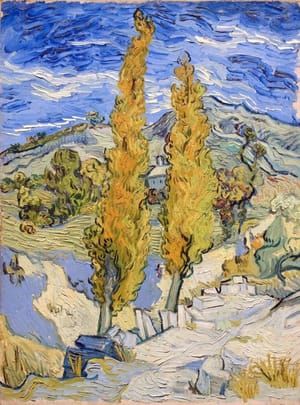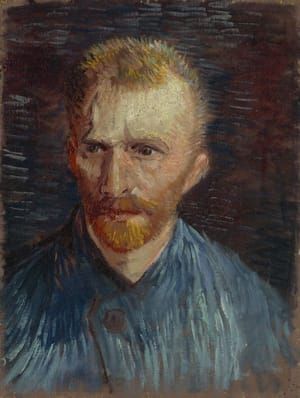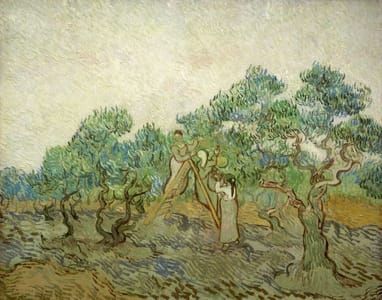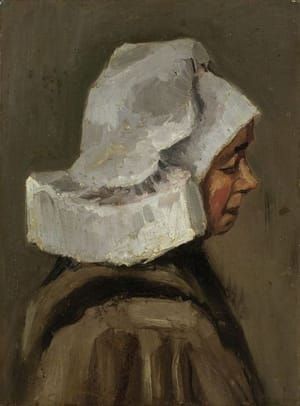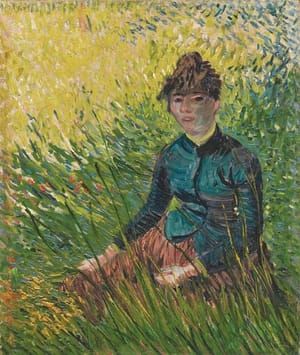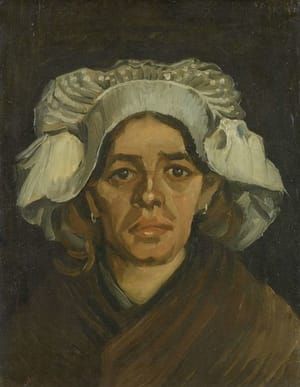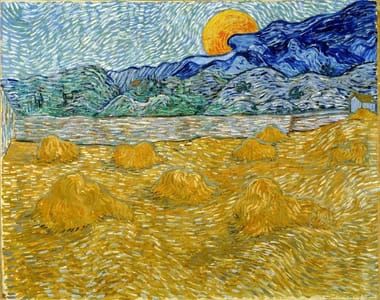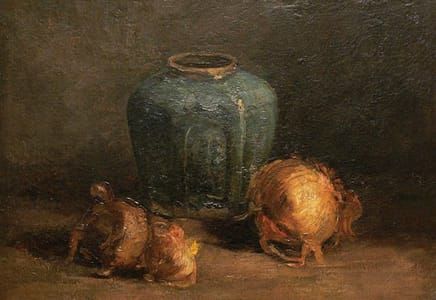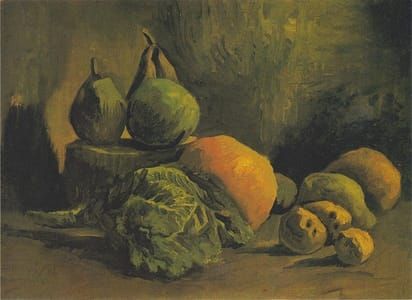
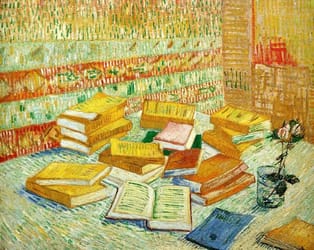
Romans Parisiens (Still Life With French Novels And A Rose), 1887
Vincent van Gogh
...In 1887, the same year Vincent wrote about his radical view of the Bible and modern literature to sister Wil, he demonstrated the new outlook in his painting Romans Parisiens (Paris Novels). Twenty or more paperback novels, most of them bright yellow, are piled extravagantly on the table of his Paris apartment with a glass and stem of roses. The novel directly in front of the viewer is open. Vincent here celebrated modern literature and expressed gratitude for books, which saved and revolutionized his life in times of despair, leading him to take up that same mission, though in lines and color. The novel opened in the in the foreground invites and challenges: "We know how to read--well then, let us read!" (Letter 133)
Books play a role in numerous other works by Vincent, who admired paintings of readers by other artists. During the winter of 1887 he had done a painting of three novels on the oval panel of a tea chest, painted the famous Romans Parisiens and a still life with plaster statuette, rose, and two novels--one by Guy de Maupassant (Bel-Ami) and the other by the De Goncourts (Germinie Lacerteux). In Arles, he painted an almond branch beside a book books beside a jar with oleander branches, one version of The Arlesienne with Two books, and a woman reading a novel. In December 1888, there are novels in Gauguin's Chair, and in January 1889, Raspail's volume Annuaire de la Sante is placed along with onions and other objects on a table top. His Arlesienne from a drawing by Gauguin has on the table in front her Harriet Beecher Stowe's Uncle Tom's Cabin and Dickens's Christmas Carol. Finally, one of his portraits of Dr. Gachet from Auvers, which he painted in 1890, has the novels Germinie Lacerteux and Manette Salomon by the de Goncourts on the table. Further, novels, even when not pictured directly, often inspired Vincent to paint specific subjects or wrestle with particular issues.
Books obviously played an important role in Vincent's life, perhaps as important as the role the Bible had once claimed for itself. One reason, generally, overlooked by critics, is that Vincent's personal peculiarities, his alienation as a wandering foreigner, his "strange" profession, and his isolation during periods of painting from dawn to dusk in the countryside, left him with few human contacts apart from literature. His books were his bridge to society, to human feelings and motives, currents of thought, and even to trivia and gossip.
(Van Gogh and God: A Creative Spiritual Quest, by Cliff Edwards; Google)
Uploaded on Nov 14, 2017 by Suzan Hamer
Vincent van Gogh
artistArthur
Wait what?


